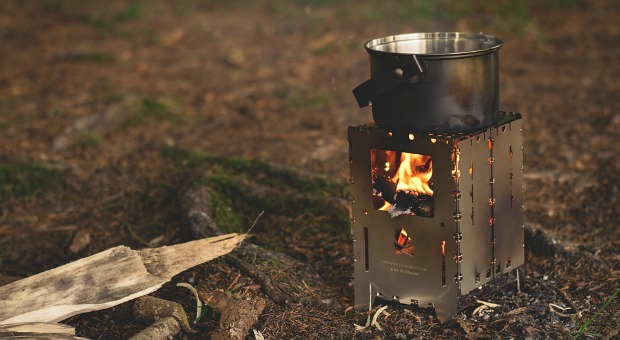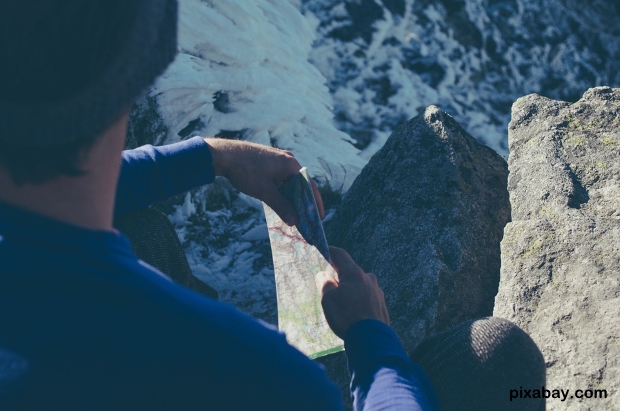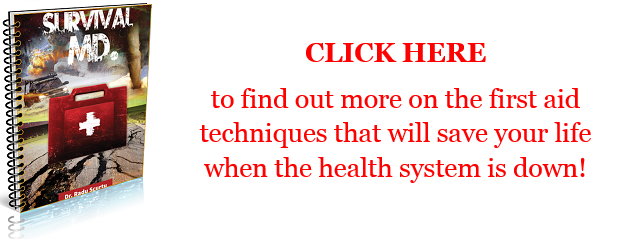Many people find themselves wishing that they could spend the rest of their lives in the mountains. Perhaps this is why many people choose these places to go on vacation regardless of the time of the year.
While there is much to see and enjoy in a mountain setting, there are also some dangers that you must be aware of, especially if you get lost.
Even if you are a seasoned mountain hiker, you may still get lost and need to know how to survive until you get back to civilization.
The following guide is meant as an introduction to how to survive in the mountains so that you can increase your chances of getting home quickly, easily and safely.
Always Pack and Choose Partners for Success
Before you go into the mountains, it is very important to make sure your backpack contains all the necessary supplies for routine travel as well as if you become lost or injured.
- Make a detailed travel plan and make sure that each person traveling with you has a copy of it. This plan should also include meeting points in case something happens that causes you to get separated from the group.
- Aside from having first aid supplies, one or more people in the group should be trained in how to handle medical emergencies. It will also be helpful if this person knows how to use natural medicines.
- Try to travel with at least 2 other people. It is not advisable to travel alone.
- Everyone in the hiking party should have their own backpack equipped with basic survival supplies. This should include a compass, map, mirror, small first aid kit, whistle, flashlight, a fully charged cell phone or satellite phone (with emergency phone numbers), and bright colored material to attract aerial rescuers.
- It is important to always bring food or water with you even through it is only a day hike.
- Each member of the party should have a compact water filter system and water purification tablets.
- Bring an emergency blanket and a tarp to help you stay warm.
- Pack the correct clothing for the time of year. If it is cool or cold, then pack clothing that can be worn in layers to put on or take off as necessary.
- Bring the correct type of gear for the time of year. This could include snowshoes, cross country skies, insulated boots or ice grippers for the boots.
- If you are going to be in a snowy country, be sure to pack your emergency beacon and emergency airbag. When activated, the airbag will give you more buoyancy, which helps to keep you on top of the avalanche.
Make Sure Others Realize You Might Need Help
Planning your route through the mountains does more than give you a clear idea of the terrain you will be traveling through. Your plans are a key survival tool. Copies should be left behind with someone that you trust.
The best plans are:
- Made well ahead of time and compared with detailed trail maps.
- Include information from professionals who have traveled in the area; search information about the route and what to expect – this includes landmarks in the area and what dangers can you expect.
- Always check the weather forecast for the area you plan to hike in, plus the time of the sunrise and sunset. This information will help you gauge expected temperature changes so that you have enough time to setup camp or gather materials if needed.
- Let others know where you might go or be if you are in an emergency situation or cannot travel.
- Set clear time frames for when you will be leaving and when you are expected to come back.
- Give information on what rescue groups are in the area in case you do not return as expected. If you don’t return at the expected time, this will make it easier for the person you left plans with to initiate a rescue mission.
Things to Do When Hiking
- Every so often, look behind you. This will help you remember what the route looks like on the way back home.
- Look for landmarks and try to locate them on the map.
- Take some photos of the route you have taken. Include pictures with your hand pointing in the direction to go when heading back home. Try to include landmarks located near the trail.
- If you become concerned about not being able to find your way home, make some arrows on the ground with loose rocks or branches. Be sure to destroy them on the way home.
How to Manage Getting Lost
Even though you may have hiked along happily for several hours, there is going to be a moment when you realize that you aren’t where you thought you were. Regardless of how you got lost, it is important to take the following steps:
- First, DO NOT PANIC!
- You must stop, stay calm, stay put and make your plan.
- Sit down, eat and drink something. This will calm you down and give you a chance to make a plan.
- Panicking can only make it worse for you. The last thing you want to do is go thrashing around further away from a viable trail or deeper into the mountain wilderness. If it is getting late in the day and you are in a safe area, it may be best to make camp and get a good night’s rest before starting again in the morning.
- If you feel you are lost do not start running or walking faster than your normal pace. If you do, you risk the chance of falling in the mountainous terrain.
- Never split from the group or split the group up. If you do so, the rescue party will be looking for two groups of people instead of one.
Action plan
After you have regained your composure and come to terms with being lost, use the following plan of action to get yourself out of mountains safely:
Think
- How did you get here?
- What land marks should you be able to see?
- What was the direction of travel?
- What was the last known position where you were sure you were on the right trail?
Observe
- What does the terrain look like?
- Where on the map does it look like that?
- What is the sun’s location in the sky?
- How much time is left before sunset?
- What is left in the supply inventory?
- How long will the supplies last?
Plan
- Never move from this area until you have a plan.
- Based on your observations and thinking, come up with workable plans, and then use the best one.
- Even though phones may not work deep in the mountains, you may be lucky enough to have coverage. If you can get a signal, call for help. The person answering may tell you how to get back to a main road safely, or they will arrange for someone to come and help you.
- Try to signal to other hikers in the area by blowing a whistle three times (this is the international distress signal.)
- If you are trying to signal to aircraft, try using a mirror, put on bright colored clothing, or arrange objects to spell out HELP or SOS in an area where someone in a plane or helicopter can spot them.
- If you are carrying a flare gun, shoot a flare when an approaching aircraft is coming towards you. When the flare is seen, the aircraft will circle you to let you know that you have been spotted.
Dealing With Injuries
If someone is injured in your party the best thing to do is to stay put and signal for help. Look for a sheltered spot to keep you out of the rain and wind before it gets dark. Depending on the temperatures and the situation:
- To avoid hypothermia put on more clothing to help you stay warm.
- Use the tarps and emergency blankets to make a tent to sleep in.
- Don’t sleep near bodies of quickly moving water. The noise might make it hard to hear the rescuers.
- Carefully start a controlled fire for warmth and to help signal your location to rescuers.
- Hang colorful items from the backpacks on trees and bushes to help rescuers find you.
- If you feel confident enough after some rest, try to retrace your footsteps to find the path you were on yesterday.
Quick Tricks to Get Off the Mountain
If you are able to travel, pick a direction and keep moving. It does not matter which direction. Just keep moving straight until you reach running water. Here’s why:
- In the mountains, communities are located around water supplies. Finding a river or creek and following it may lead you to a small town. Always follow the water downstream. At some point you are going to cross a road or a road junction. Following the water downstream will also eventually take you back to more populated areas.
- If you’re hiking above the treeline in the mountains, follow cairns and blazes to get you down the mountain.
Skills You Need for Surviving in the Mountains
If in the event your short day hike turns into a multi-day disaster, it is to your advantage to have the following skills:
- How to start a fire.
- Build a shelter.
- Find or secure safe drinking water.
- How to determine what is and what is not safe to eat.
- Signal for help.
- Hunt, trap, or fish for food.
- How to cope with freezing temperatures, blizzards, and other severe weather conditions. With each increasing foot of latitude, temperatures fall and so does your chance of surviving if you don’t know how to stay warm. Even if it is summertime in the foothills or valleys, you may still have freezing temperatures on the mountain tops. No matter how warm you may think it will be in the mountains, keep extra layers of clothes on hand, plus heavier gear. Pack them in vacuum bags if you need to compact them for easier travel.
- Manage your breathing in higher elevations (especially if you aren’t used to thinner air or are a bit out of shape).
Are you interested in finding more about surviving in the mountains? CLICK HERE to subscribe for Survivopedia’s newsletter and get more tips on how to get alive when you get lost in the mountains!
This article has been written by Fred Tyrell for Survivopedia.










William Halford | September 5, 2016
|
If you have to make arrows on the ground to use as a reference to get back, why suggest destroying them as you make your way back? That makes no sense for at least two reasons I can think of.
(1) If you happen to get lost and circle back for some reason, you’ll come back to the arrow again and recognize it. That’ll maybe help give you the idea to not make whatever wrong turn you made before.
(2) Destroying the arrow wastes time and energy that could be critical to getting back or surviving in the area overnight. It can take away from critical efforts needed to survive.
Smelly Bob | April 11, 2017
|
Yo fam, i am going hiking an i will need smarts to not die. HELP!!!